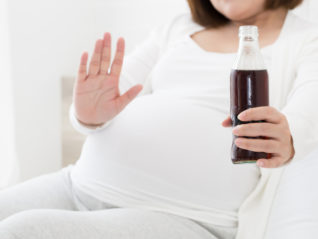
The health and lifestyle choices a mother makes during pregnancy has immense impact on the unborn child during in-utero development and beyond. It is well known that drinking alcohol during pregnancy can lead to fetal alcohol syndrome; taking certain medications such as isotretinoin, a common acne drug, can lead to birth defects; and consuming inadequate quantities of folate while pregnant can increase risk of spina bifida and other mid-line defects in the child.
Ingesting inappropriate types and quantities of medications, drugs, foods and beverages in addition to other environmental exposures during pregnancy have the potential to harm the unborn child leading to miscarriage, birth defects and, as more recent literature has found, can increase risk factors associated with obesity,1 cardiovascular disease and diabetes potentially impacting the child into their adult years.
Key Points
One area that has come under scrutiny more recently is how a mother’s dietary habits impact her unborn child not only during in-utero development and directly after birth, but into mid-childhood, adolescence and into the adult years and beyond. A prospective prebirth cohort study published in Pediatrics aimed to examine the association between consumption of sugar sweetened beverages (SSBs) during pregnancy with the adiposity in these children during mid-childhood (median age of 7.7 years).2
This study utilized mother-child pairs participating in the prebirth cohort study Project Viva between the years 1999 and 2002. Overall, the sample size used for analysis was 1078 mother-child pairs all of whom participated in study visits during the first few days after delivery, during infancy (median age of 6.3 months), early childhood (median age of 3.2 years), and mid-childhood (median age of 7.7 years). In addition, mothers completed mailed questionnaires at 1, 2, 4, 5, and 6 years of age of their child.2
It was found that mother’s with higher consumption of SSB during the second-trimester of pregnancy also had the following characteristics:2
- Younger maternal age
- Higher pre-pregnancy BMI
- Multiracial race and/or ethnicity
- Lower education and household income
- More likely to smoke during pregnancy
- Shorter breastfeeding duration
- Earlier introduction of solid foods in their children
However, even after adjusting for the above variables, this study found that mother’s consuming the highest amounts of SSB during the second-trimester of pregnancy had children who, during mid-childhood, had the highest BMI exceeding the age-sex-specific 85th percentile. Adiposity outcomes in mid-childhood were highest among children whose mothers consumed at least 2 servings per day of SSBs during the second trimester of pregnancy; adiposity during mid-childhood increased with each additional serving of SSB by the mother during the second trimester of pregnancy.2
Only SSB consumption was correlated to increased adiposity in mid-childhood; similar results were not found when analyzing for consumption of juice, diet soda or water. Adjusting for the consumption of SSB by the child through mid-childhood did not appreciably change the results indicating that the mother’s consumption of SSB during second trimester of pregnancy had a greater effect on mid-childhood adiposity than did the child’s consumption of SSB during the first few years of life. Finally, the quantity of SSB consumption during first trimester of pregnancy did not affect the adiposity levels of mid-childhood, only the amount consumed during second trimester was found to be related.2
This study reinforces the findings that prenatal programming affects susceptibility to obesity in offspring. The implications of this includes further public health measures to educate mothers on the importance of their dietary habits during pregnancy, particularly during the second trimester. Dietary choices during pregnancy may be an approach that could help stem the tide of childhood obesity.1-2
Key Takeaways
- Mother’s dietary habits during pregnancy may have a greater influence on childhood obesity rates than a child’s dietary habits through mid-childhood
- Consumption of SSB during pregnancy, particularly second trimester consumption, is correlated to increased rates of adiposity in children at mid-childhood age
- Education during prenatal period is extremely important and may be a key component to fighting childhood obesity
- Public health campaigns should be created to educate the public on the importance of reducing or eliminating SSB consumption during pregnancy
References
- Harvard T.H. Chan School of Public Health. Prenatal and Early Life Influences. https://www.hsph.harvard.edu/obesity-prevention-source/obesity-causes/prenatal-postnatal-obesity/. Accessed August 9, 2017.
- Gillman MW et al. Beverage intake during pregnancy and childhood adiposity. Pediatrics. 2017;140(2):e20170031.




